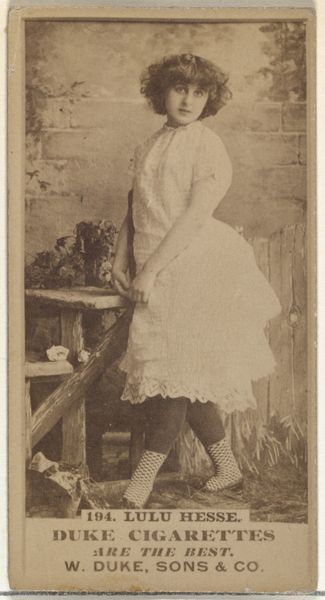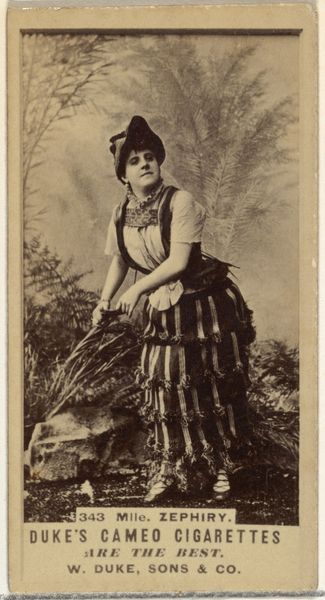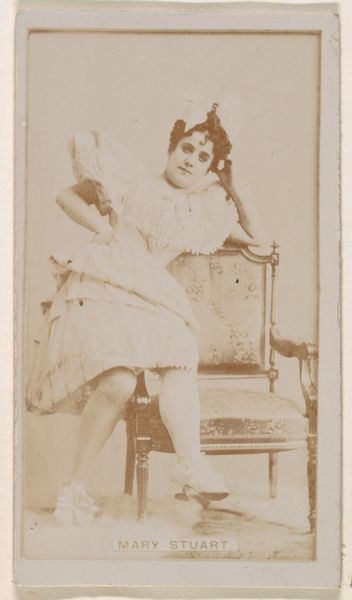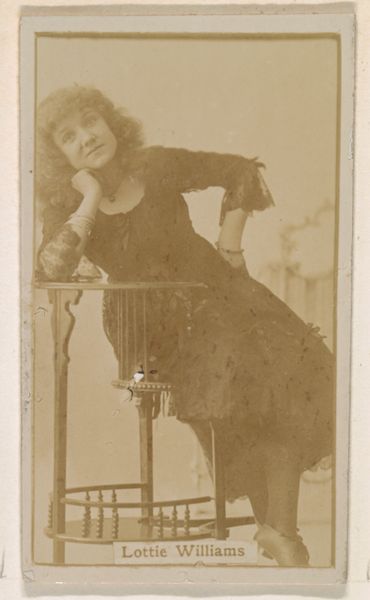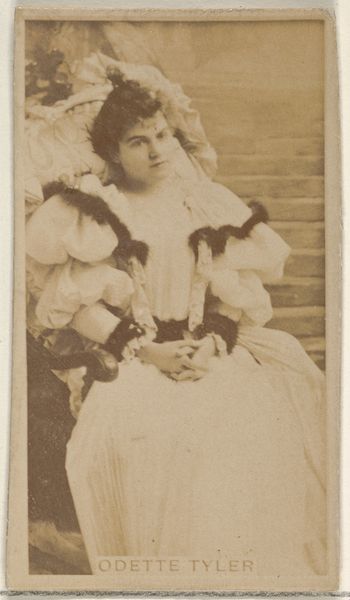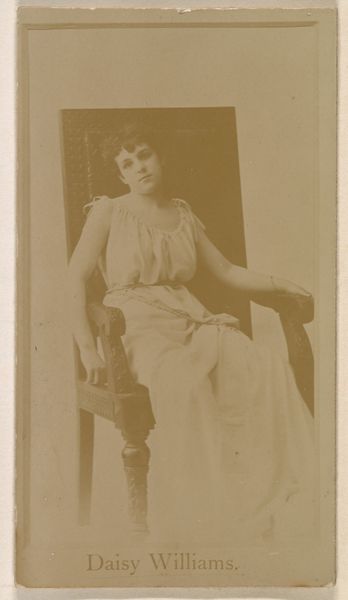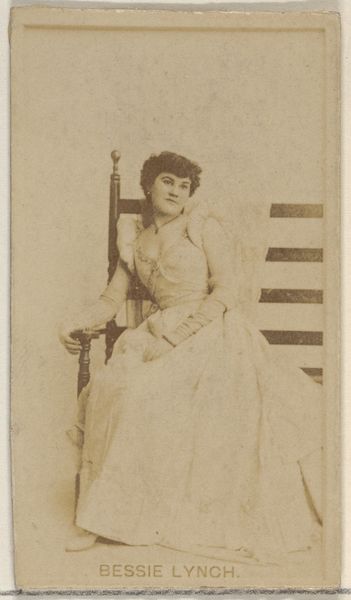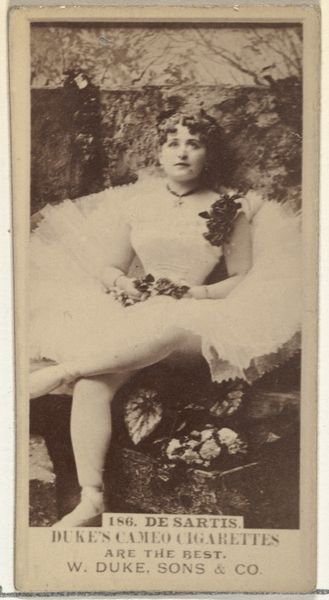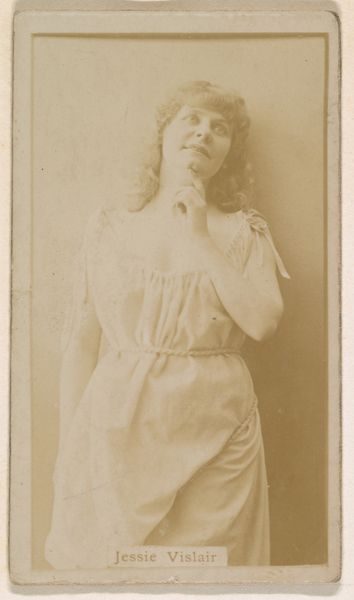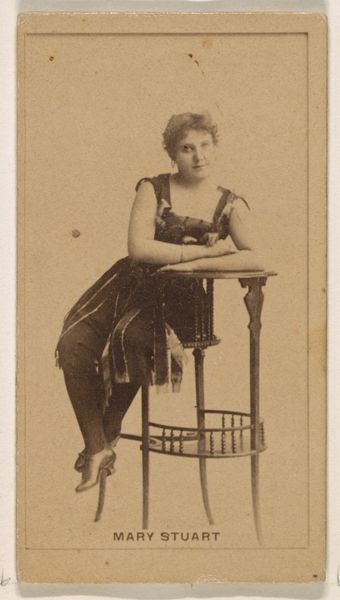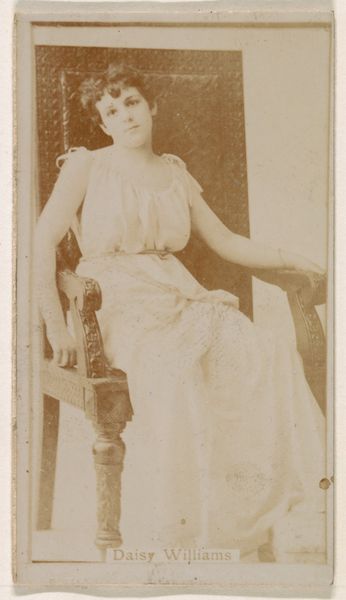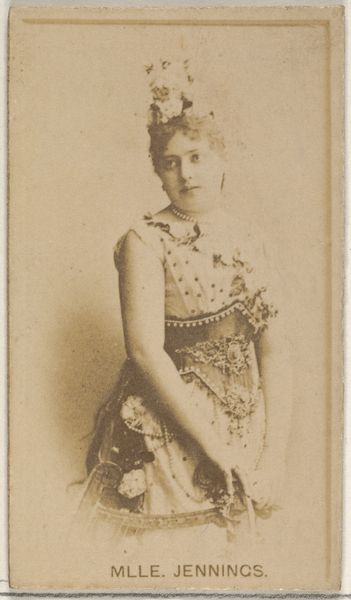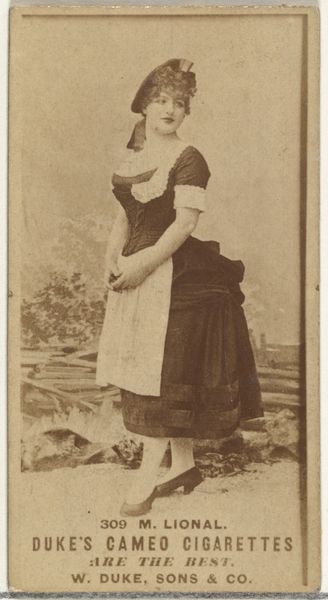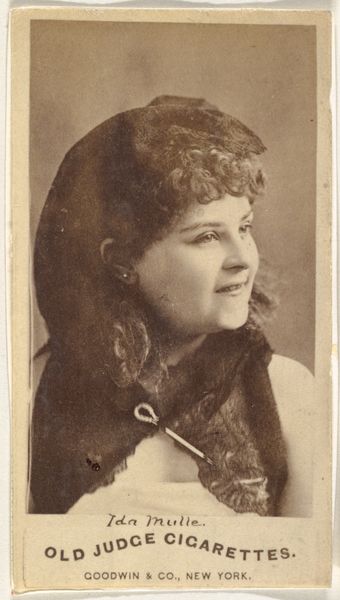
photography, gelatin-silver-print
#
portrait
#
pictorialism
#
photography
#
black and white
#
gelatin-silver-print
#
monochrome photography
#
monochrome
#
modernism
#
monochrome
Dimensions: sheet (trimmed to image): 11.6 x 9.3 cm (4 9/16 x 3 11/16 in.) mount: 31.2 x 24.8 cm (12 5/16 x 9 3/4 in.)
Copyright: National Gallery of Art: CC0 1.0
Editor: This photograph, "Jennie (?)", was created by Alfred Stieglitz in 1920. It's a gelatin-silver print, striking in its simple composition. It gives off a sense of quiet resilience, and makes me wonder about the sitter's story. What stands out to you about this piece? Curator: What interests me is how this image, made during a time of significant social and political shifts, especially concerning women's roles, presents Jennie. She’s positioned in front of what looks like a rather rustic doorway. Consider the context: Stieglitz was a key figure in promoting photography as a fine art. What does it mean to use this newly accepted art form to capture, not a glamorous socialite, but a woman in perhaps more humble circumstances? Editor: I see your point. Was Stieglitz making a statement by photographing someone like Jennie, sort of elevating the everyday? Curator: Precisely. The "politics of the image" are at play here. He isn’t just documenting; he's making a choice to represent her in this way. The use of Pictorialism, with its soft focus, romanticizes the subject to some degree, doesn't it? Does that romanticization obscure or reveal something about her reality and the reality of women like her at the time? Editor: I hadn't considered the Pictorialist influence as a choice with social implications, it makes me wonder if it helps distance the work from photojournalism... I now wonder what role galleries played at the time in framing this narrative of women. Curator: Museums and galleries became crucial spaces for shaping the public’s perception of art and, by extension, the subjects depicted within. How do you think the act of displaying such a portrait changed its meaning? Editor: This conversation really highlights the power of context. Seeing “Jennie (?)” as more than just a portrait but as a cultural artifact within the history of art, gender, and representation changes everything. Curator: Exactly. By examining its social and institutional history, we understand how much meaning is layered within this seemingly simple photograph.
Comments
No comments
Be the first to comment and join the conversation on the ultimate creative platform.
